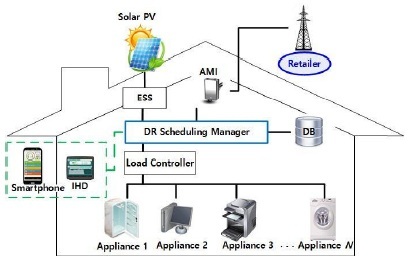- ALL COMPUTER, ELECTRONICS AND MECHANICAL COURSES AVAILABLE…. PROJECT GUIDANCE SINCE 2004. FOR FURTHER DETAILS CALL 9443117328


Projects > ELECTRICAL > 2017 > IEEE > POWER SYSTEMS
With the current state of development in demand response (DR) programs in smart grid systems, there have been great demands for automated energy scheduling for residential customers. Recently, energy scheduling in smart grids have focused on the minimization of electricity bills, the reduction of the peak demand, and the maximization of user convenience. Thus, a user convenience model is proposed under the consideration of user waiting times, which is a non-convex problem. Therefore, the non-convex is reformulated as convex to guarantee optimal solutions. Moreover, mathematical formulations for DR optimization are derived based on the reformulated convex problem. In addition, two types of pricing policies for electricity bills are designed in the mathematical formulations, i.e., real time pricing policy and progressive policy. With real-time pricing policy, convexity is guaranteed whereas progressive policy cannot. Then, heuristic algorithms are finally designed for obtaining approximated optimal solutions in progressive policy.
Optimization Algorithm.
In this paper, the convex programming framework to guarantee an optimal solution in real time pricing policy is proposed. As mentioned earlier, progressive schemes suffer from being NP-hard problems. However, our scheme presents a heuristic algorithm to solve NP-hard problems and obtain an approximate optimal solution for minimizing the electricity bill and peak consumption, as well as maximizing user convenience. The proposed algorithm considers both the electricity cost and user convenience, which can be applied to solve the non-convex problem. The techniques that can convert a non-convex problem to a convex problem are proposed. By using these techniques, the proposed user convenience formula can be applied to solve the convex problem. Therefore, it is possible to guarantee an optimal solution in the real time pricing policy. For the progressive policy, a heuristic algorithm is proposed to obtain an approximated near-optimal solution for the given non-convex problem.
Smart Grid Residential System Architecture
